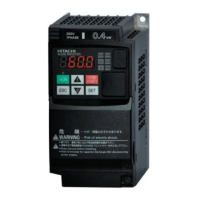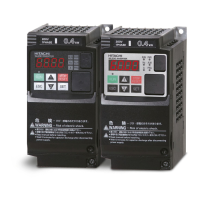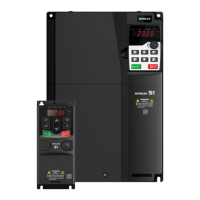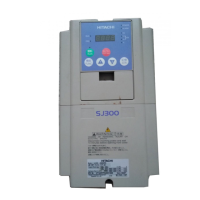Chapter 9 Inverter Functions
9-10-7
9.10.7 Monitoring Motor Temperature
How to provide thermal protection for the motor?
How to use the resistance of the thermistor in the motor to provide temperature protection?
A thermistor installed in the motor and other external devices can be wired to the inverter and
set to function to provide temperature protection for external devices.
An external thermistor should be wired between the input terminal [5] and [L]. At this time,
assign an "External thermistor [PTC] (19)" to the input terminal [5]. When assigning [PTC], the [L]
terminal is the common terminal regardless of the sink/source logic.
If the resistance of the PTC thermistor becomes approximately 3 kΩ or more, a "Thermistor error
[E35]" occurs. To fine-tune the resistance value that generates [E35] or to change the
temperature setting for generating an error according to the characteristics of the thermistor
used, adjust the value of "Thermistor gain adjustment [C085]".
Use twisted wires for wiring the [PTC] terminal and [L] terminal of the external thermistor to
separate from other [L] common wires. The wiring distance should be within 20 m. For wiring,
also refer to "5.4 Control Circuit Terminal".
Since the current flowing in the thermistor is small, consider separation of wiring to avoid noise
caused by motor current, etc.
External thermistor [PTC]:
A PTC thermistor can be wired to [PTC] terminal
and inverter can detect the temperature of the
motor and other external devices.
This allows for fine-tuning the setting of "Thermistor
error [E35]" for the operation resistance value of the
connected thermistor.
To trip the inverter with the PTC thermistor's
resistance value smaller than 3 kΩ, increase the value
of this setting.
To trip the inverter with the PTC thermistor's
resistance value greater than 3 kΩ, decrease the value
of this setting.

